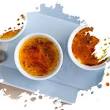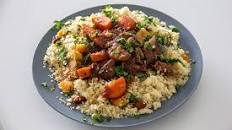The Sweet Delights of Moroccan Cuisine
When it comes to Moroccan cuisine, the diverse flavours and aromatic spices often take the spotlight. However, one aspect of Moroccan gastronomy that should not be overlooked is the array of delectable sweet dishes that tantalise the taste buds and satisfy even the most discerning sweet tooth.
Pastilla
Pastilla is a traditional Moroccan pastry that combines sweet and savoury flavours in a harmonious blend. Layers of thin pastry encase a filling of spiced meat, typically pigeon or chicken, mixed with almonds, eggs, and a hint of cinnamon. The top is dusted with powdered sugar and cinnamon for a delightful contrast of flavours.
Chebakia
Chebakia is a popular Moroccan sweet treat often enjoyed during special occasions such as Ramadan or weddings. These deep-fried pastries are shaped into intricate flower-like designs, coated in honey, and sprinkled with sesame seeds. The combination of crunchy texture and sticky sweetness makes chebakia irresistible.
M’hanncha
M’hanncha, also known as “snake cake,” is a rolled pastry filled with almond paste flavoured with orange blossom water and cinnamon. The pastry is shaped into a coil resembling a snake’s coil before baking to golden perfection. M’hanncha is typically served dusted with icing sugar for an elegant presentation.
Sellou
Sellou is a unique Moroccan dessert made from toasted flour, almonds, sesame seeds, honey, and spices such as cinnamon and anise. This nutritious sweet dish is often prepared during festive occasions like Eid al-Fitr and provides an energy boost due to its high protein content.
Baghrir
Baghrir, also known as “Moroccan pancakes,” are spongy semolina pancakes with countless tiny holes on the surface that soak up delicious buttery honey or syrup drizzled on top. These light and airy pancakes are a popular choice for breakfast or afternoon tea in Morocco.
Exploring the world of Moroccan sweet dishes reveals a treasure trove of flavours and textures that showcase the country’s culinary creativity and rich heritage. Whether you have a penchant for pastries or crave something unique to satisfy your sweet cravings, Moroccan desserts offer an unforgettable culinary experience that will linger on your taste buds long after the last bite.
Exploring the Delightful Allure of Moroccan Sweet Dishes: Nine Compelling Reasons to Indulge
- 1. Rich in Flavour
- 2. Unique Ingredients
- 3. Variety of Textures
- 4. Cultural Experience
- 5. Festive Treats
- 6. Nutritious Elements
- 7. Artistic Presentation
- 8. Sweet-Savoury Balance
- 9. Versatile Options
Challenges of Moroccan Sweet Dishes: A Look at Sugar Levels, Allergens, and Accessibility
- Moroccan sweet dishes can be overly sweet for those with a preference for less sugary treats.
- Some traditional Moroccan desserts contain nuts, which may not be suitable for individuals with nut allergies.
- The intricate preparation of certain Moroccan sweets can be time-consuming and labor-intensive.
- Due to the use of exotic ingredients like orange blossom water or rose water, some people may find the flavours too fragrant or unfamiliar.
- Moroccan sweet dishes often rely on refined sugars and syrups, which may not align with a low-sugar or diabetic-friendly diet.
- Finding authentic Moroccan sweets outside of Morocco can be challenging, limiting accessibility to these delectable treats.
1. Rich in Flavour
Moroccan sweet dishes stand out for their richness in flavour, captivating taste buds with a harmonious fusion of spices and ingredients. From the subtle notes of cinnamon to the fragrant essence of orange blossom water, each component in Moroccan sweets contributes to a symphony of taste sensations that delight the palate. The intricate combination of flavours in these desserts reflects the culinary artistry and cultural diversity of Morocco, making every bite a journey through a tapestry of bold and nuanced tastes.
2. Unique Ingredients
One of the standout advantages of Moroccan sweet dishes is the use of unique ingredients that elevate the culinary experience. From the fragrant essence of orange blossom water to the nutty richness of almonds and the delicate crunch of sesame seeds, these exotic flavours infuse Moroccan desserts with a depth and complexity that set them apart. Each bite becomes a sensory journey, blending traditional ingredients in innovative ways to create a symphony of taste that lingers on the palate long after the last morsel is savoured.
3. Variety of Textures
Moroccan sweet dishes stand out for their diverse range of textures, adding an extra layer of delight to the culinary experience. From the crispy crunch of chebakia to the spongy softness of baghrir, each bite brings a unique sensation that tantalises the taste buds. This variety in textures reflects the intricate craftsmanship and attention to detail that are hallmarks of Moroccan gastronomy, ensuring that every dessert lover finds something to savour and appreciate in these sweet delicacies.
4. Cultural Experience
Sampling Moroccan sweet dishes offers more than just a treat for the taste buds; it provides a cultural experience that delves into the heart of Morocco’s culinary traditions and rich heritage. Each bite of a Moroccan sweet delicacy carries with it centuries of history, reflecting the influences of Berber, Arab, and European culinary practices. By indulging in these sweet delights, one can truly immerse themselves in the vibrant tapestry of Moroccan culture, gaining a deeper appreciation for the flavours and stories that have been passed down through generations.
5. Festive Treats
Many Moroccan sweet dishes hold a special place in the hearts of locals, as they are intricately linked to cherished traditions and festive occasions. From weddings to religious holidays like Eid al-Fitr, these delectable treats bring a sense of joy and celebration to every gathering. Each bite of these sweets not only delights the palate but also carries with it the spirit of togetherness and merriment, making them an essential part of Moroccan cultural festivities.
6. Nutritious Elements
In the realm of Moroccan sweet dishes, the presence of nutritious elements shines through in creations like sellou. This traditional dessert boasts a blend of almonds and sesame seeds, offering not only a delightful taste but also essential nutrients and energy. The incorporation of these wholesome ingredients elevates the culinary experience, ensuring that indulging in Moroccan sweets not only satisfies the palate but also nourishes the body with their rich nutritional content.
7. Artistic Presentation
The artistic presentation of Moroccan sweet dishes adds a touch of elegance and sophistication to the culinary experience. Pastries like m’hanncha, with their intricate designs and carefully crafted shapes, exemplify the artistry and meticulous attention to detail that define Moroccan dessert making. Each dessert is not only a treat for the taste buds but also a feast for the eyes, reflecting the cultural richness and creativity that are deeply ingrained in Moroccan culinary traditions.
8. Sweet-Savoury Balance
Moroccan sweet dishes excel in achieving a delightful sweet-savoury balance, as exemplified by the iconic pastilla. This culinary masterpiece harmoniously blends the sweetness of spiced meat, almonds, and cinnamon with the savoury elements of flaky pastry, creating a taste experience that is both indulgent and satisfying. The intricate balance of flavours in dishes like pastilla showcases the culinary artistry of Moroccan cuisine, captivating the palate with every bite.
9. Versatile Options
Moroccan sweet dishes offer versatile options that cater to a variety of tastes and preferences. Whether you crave light and airy pancakes like Baghrir or indulge in rich and decadent pastries such as Pastilla, there is a sweet treat to suit every palate. The diverse range of flavours and textures in Moroccan desserts ensures that there is something for everyone, making it easy to find the perfect sweet dish to satisfy your cravings.
Moroccan sweet dishes can be overly sweet for those with a preference for less sugary treats.
Moroccan sweet dishes, while beloved for their rich flavours and unique combinations of ingredients, may not suit everyone’s palate, especially those who prefer less sugary treats. The sweetness in Moroccan desserts often comes from honey, sugar, or dried fruits, resulting in a pronounced sweetness that can be overwhelming for individuals with a preference for milder flavours. It is important to be mindful of the level of sweetness in Moroccan sweet dishes to ensure that they align with individual taste preferences and dietary considerations.
Some traditional Moroccan desserts contain nuts, which may not be suitable for individuals with nut allergies.
Traditional Moroccan desserts, while renowned for their exquisite flavours and textures, may present a challenge for individuals with nut allergies. Many of these sweet dishes incorporate nuts such as almonds, walnuts, or sesame seeds as key ingredients, which could pose a risk to those with nut sensitivities. It is essential for individuals with allergies to exercise caution and carefully inquire about the ingredients used in Moroccan desserts to ensure a safe and enjoyable culinary experience.
The intricate preparation of certain Moroccan sweets can be time-consuming and labor-intensive.
The intricate preparation of certain Moroccan sweet dishes can be both time-consuming and labor-intensive, requiring meticulous attention to detail and patience in the kitchen. From shaping delicate pastries to layering complex flavours, these traditional recipes demand a dedication to preserving the authenticity and craftsmanship of Moroccan culinary heritage. While the process may be demanding, the end result is a symphony of tastes and textures that reflect the rich cultural tapestry of Morocco, making each bite a truly rewarding experience for those who appreciate the artistry behind these sweet delights.
Due to the use of exotic ingredients like orange blossom water or rose water, some people may find the flavours too fragrant or unfamiliar.
The exotic allure of Moroccan sweet dishes, with ingredients such as orange blossom water or rose water, can be a double-edged sword for some palates. While these aromatic additions contribute to the distinctiveness of Moroccan desserts, they may overwhelm those unaccustomed to their fragrant intensity. The floral notes infused into the sweets can create a sensory experience that some individuals may find too perfumed or unfamiliar, potentially deterring them from fully appreciating the nuanced flavours of these delectable treats.
Moroccan sweet dishes often rely on refined sugars and syrups, which may not align with a low-sugar or diabetic-friendly diet.
Moroccan sweet dishes, while undeniably delicious, often pose a challenge for those following a low-sugar or diabetic-friendly diet. The reliance on refined sugars and syrups in traditional recipes can lead to spikes in blood sugar levels, making them less suitable for individuals who need to monitor their sugar intake carefully. For those with dietary restrictions or health concerns related to sugar consumption, it is important to exercise moderation when indulging in these tempting Moroccan treats to maintain a balanced and healthy diet.
Finding authentic Moroccan sweets outside of Morocco can be challenging, limiting accessibility to these delectable treats.
Finding authentic Moroccan sweets outside of Morocco can be challenging, limiting accessibility to these delectable treats. The intricate blend of flavours, traditional techniques, and unique ingredients that define Moroccan sweet dishes can often be difficult to replicate accurately in a different culinary setting. As a result, those with a craving for the rich and diverse tastes of Moroccan desserts may find themselves longing for the authentic experience that can only be truly savoured within the vibrant streets and bustling markets of Morocco itself.




